Hello,
I hope everyone is doing well. Every day brings new headlines, and recently, Japan has experienced significant damage across various regions due to the longest-staying typhoon in the past 50 years. Initially, the Japan Meteorological Agency forecasted that the typhoon would be closest to Osaka on August 23rd, but it actually made its closest approach on August 31st. By that time, however, the typhoon had weakened into a temperate depression.
Now, onto another topic: Last weekend, the pearls I own returned to me after being processed. This particular process is one that more than 90% of Akoya pearls worldwide undergo.
I’m not sure what this process is called in English, but in the Japanese pearl industry, it’s known as “pre-treatment.” The typical sequence of processes is “harvesting,” “pre-treatment,” “stain removal,” “bleaching,” and “coloring.” The components of a pearl consist of 99% calcium, with the remaining 1% being proteins. There are several types of these proteins, and their composition is what determines the pearl’s color. I find this topic fascinating and plan to write about it in more detail in the future.
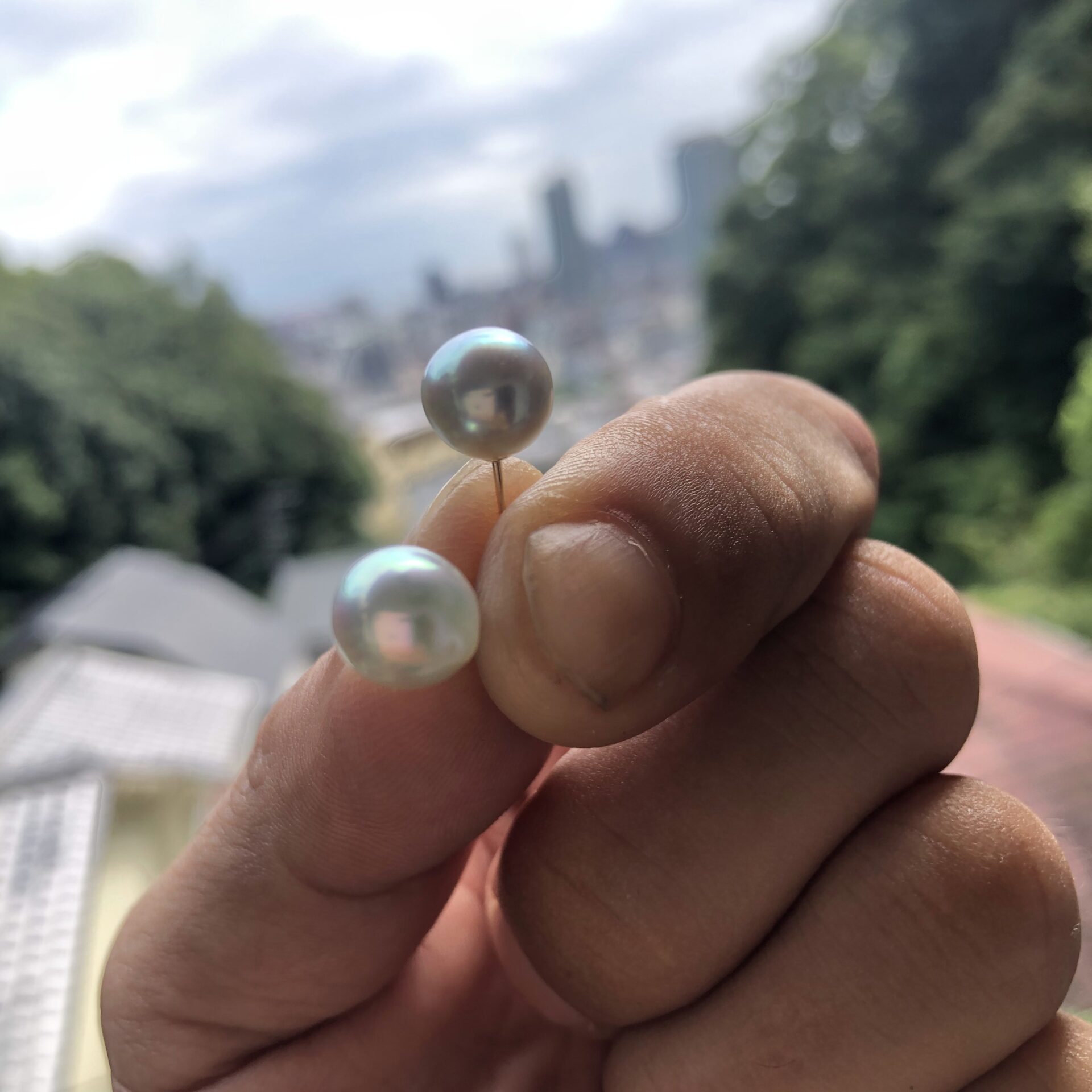
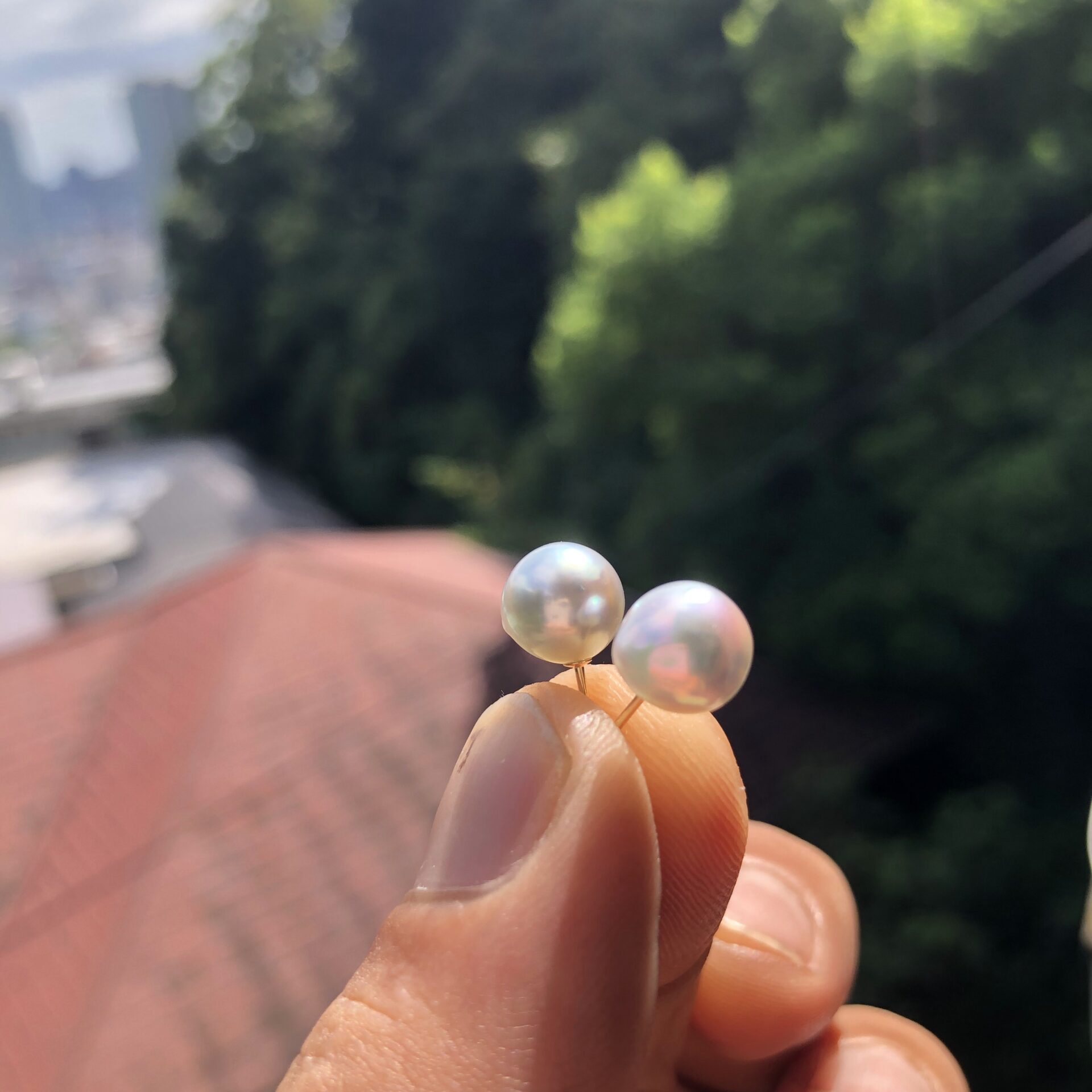
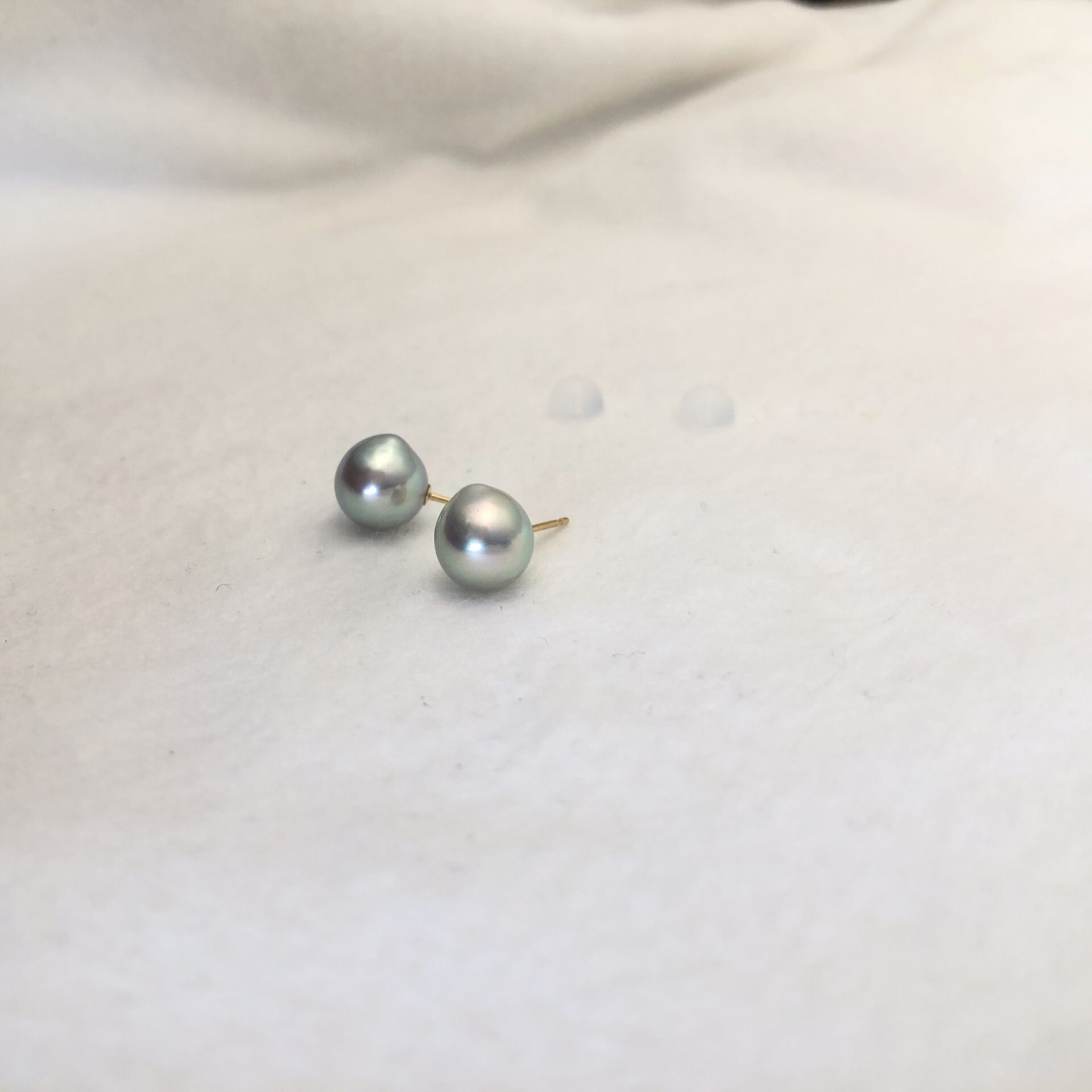
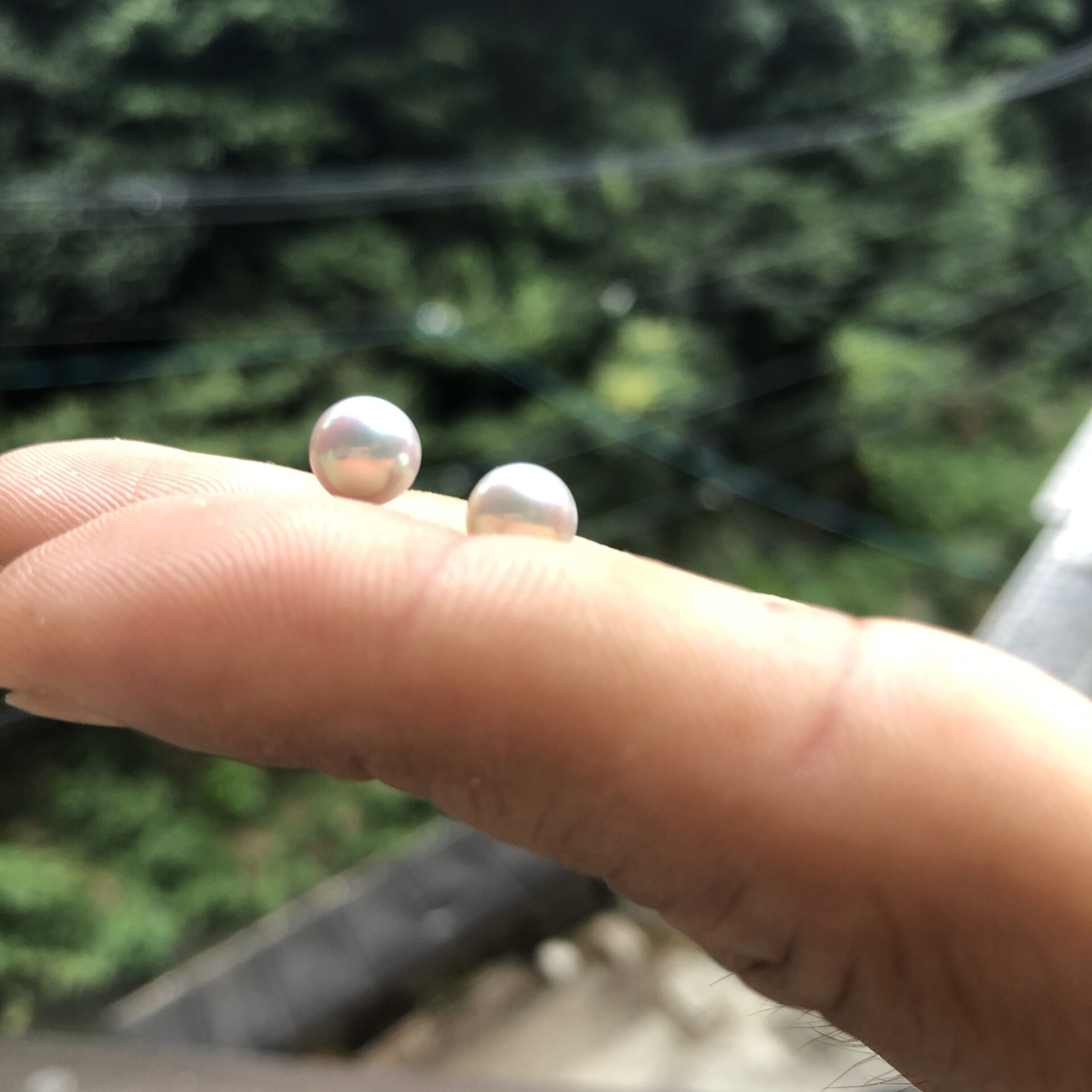
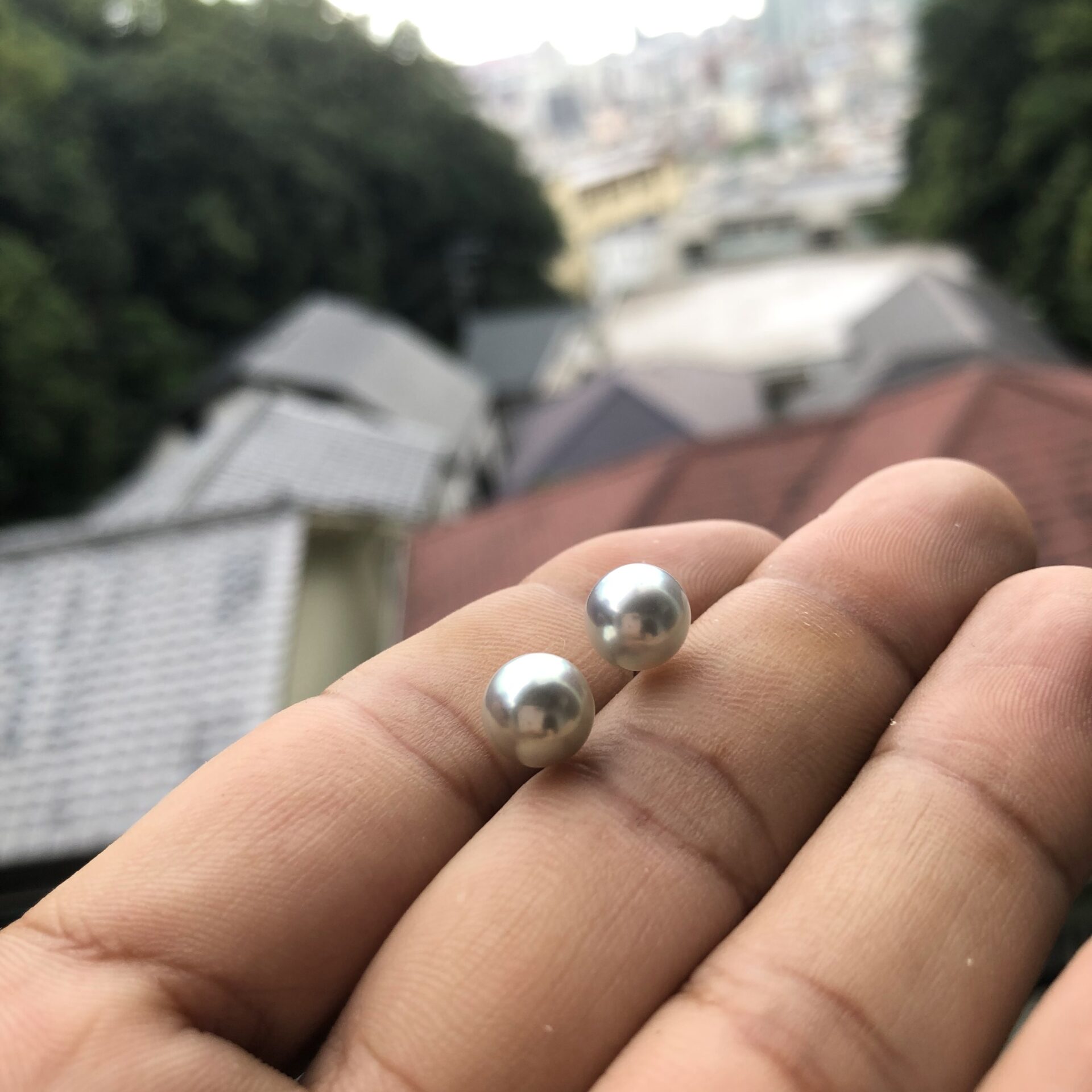
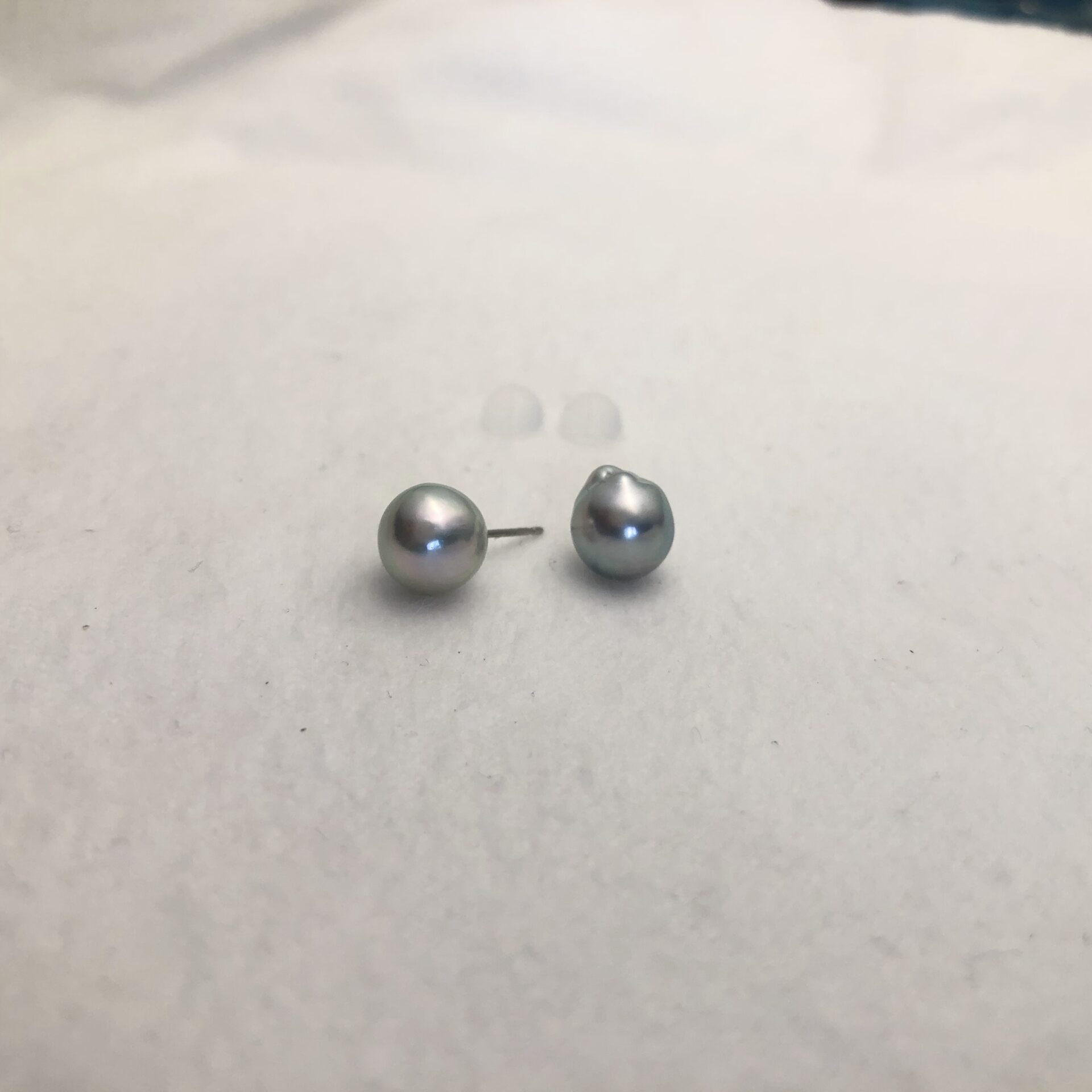

“Pre-treatment” seems to involve removing a portion of that 1%, which has a slight “tightening” effect. Specialists in pre-treatment and bleaching aren’t keen on divulging details about this process, citing trade secrets.
Undergoing pre-treatment enhances the pearl’s luster and slightly intensifies its bluish tones, emphasizing them more. It’s like cleaning a window that doesn’t seem too dirty at first; after cleaning it for a special guest, you notice it looks a tier more brilliant. That’s the effect of pre-treatment. When I request this service from a specialist, the process typically takes about a week. I imagine the pearls are submerged in some kind of solution during that time. For bleaching, the pearls are soaked in a special solution for over two months.
Once I received the newly polished pearls, I immediately began the selection process. For a batch of pearls, I first separate the highest-grade ones. These are designated for rings or earrings. In the pearl industry, these are referred to as “no-drilled” pearls and are the most expensive because they are free from any visible flaws or wounds. Pearls used in rings and earrings must not have any noticeable wounds when viewed from the front or side. A wound on a pearl used in a ring, for example, is undesirable if it’s easily noticeable. Even if there’s a wound, it should be minimal and on the back. Only pearls with no wounds or with just one small, discreet flaw are used for “no-drilled” or “half-drilled” items like rings, earrings, or brooches. “Half-drilled” means the pearl has only one drilled hole, necessary for attaching to rings or earrings.
On the other hand, there are “drilled-through” pearls, which have a hole that goes all the way through. These pearls typically have two or more wounds that would be too noticeable if used for rings or earrings. These pearls are used for necklaces. Roughly 70% of pearls end up being used for necklaces. Some pearls, even without wounds, are used for necklaces because, while one pearl is sold for a ring, 50 pearls are sold when a necklace is purchased.
With this understanding, I began the selection process for earring pearls. Even though it was a small quantity, it took me about two days to finish.
Once the selection of earring-grade pearls was complete, I started the process of pairing them for earrings. This involves carefully matching them by size, shape, color, luster, and nacre thickness. The process is akin to a marriage counseling session, where various conditions and preferences must align. I must find pearls that match these criteria.
In the pearl business, there’s a saying that each pearl is “one of a kind,” a unique gemstone created by nature. When I’m searching for pairs, this saying feels particularly ironic.
I often compare the process of pairing pearls to finding siblings or parent-child look-alikes. Even if they differ in appearance or height, there are often moments when people say, “You two look alike.” I’m the middle child of three siblings. Personally, I think my older brother and younger brother resemble our mother, while I resemble our father. However, opinions can vary depending on who’s looking.
Despite my confident explanations about pearl selection, pairing methods can differ from person to person. I prioritize luster and nacre thickness, so I might pair pearls that differ slightly in color or size, believing that even siblings can look different.
However, generally speaking, size and color are non-negotiable when it comes to earring pairs. In this sense, the way someone pairs pearls may reveal their values when it comes to pearls, which I find interesting.
In reality, after completing the pairing process, I ended up redoing it about three times. Some pairs looked noticeably different in color under different lighting conditions. I also had to break up a pair when I discovered an unavoidable wound after drilling, or when one pearl lost its bluish tone after drilling due to air pockets in the nacre, turning it into a skin-toned pearl. I’m happy to give that skin-toned pearl to anyone who wants it. It had a strong luster and a smooth surface, so it was disappointing. There are also pearls that appear deep blue when lying on the table but lose color when held up. If both pearls in a pair behave this way, it’s not a problem, but if only one does, the pair is incompatible. They “divorced due to personality differences.”
After completing the pairing, I move on to the drilling process. Each pearl must be drilled in the spot that will best showcase its beauty. A pearl’s value can change significantly depending on where it’s drilled. Some pearls can look very different just by being rotated a few centimeters, with variations in luster or surface smoothness. While some pearls look good from any angle, others only have one “good side.” I drill into that darker side to keep it hidden.
Once the drilling is done, I attach the earring fittings, a tedious process involving applying adhesive to each pearl. The adhesive hardens in about an hour, after which I carefully remove any excess with a toothpick. Leaving excess adhesive behind can result in customer complaints about “wounds” on the pearl. While the excess can be easily removed with a finger, I’ve found that customers generally dislike handling pearls roughly.
Finally, the earrings are complete. Today, I spent about six hours photographing 20 pairs of earrings and listing them on Etsy.com. However, I haven’t yet written the product descriptions, which usually take the most time.
Instead, I decided to write this article. I want to convey that these pairs were created through this kind of process.
I believe my YouTube videos can help people better understand the quality of each pearl. Among the 20 pairs, my personal favorite is the Q earrings. These pearls have an incredibly strong luster, almost as if they were coated in glass. The transparency, deep color, and overall quality of these pearls are outstanding. However, one of the pearls in the pair has a small dot-like wound. Normally, such a wound would disqualify it for earring use, but the transparency and icy, glossy surface of the pearl make the wound negligible.
Overall, I believe these pearl earrings are of quite a high quality. The processing specialist also praised them highly, remarking, “These days, there are many pearl dealers who will label anything Hanadama as long as it’s free of wounds, even if the nacre is thin.” Personally, I’m reluctant to use the term Hanadama. The definition of Hanadama has become very ambiguous. No matter how lustrous or thick the nacre is, a Baroque pearl cannot be classified as Hanadama. Isn’t that absurd? This is just my personal view, but it’s one of the reasons I’m determined to continue working with Baroque pearls.
Thank you.

Comment